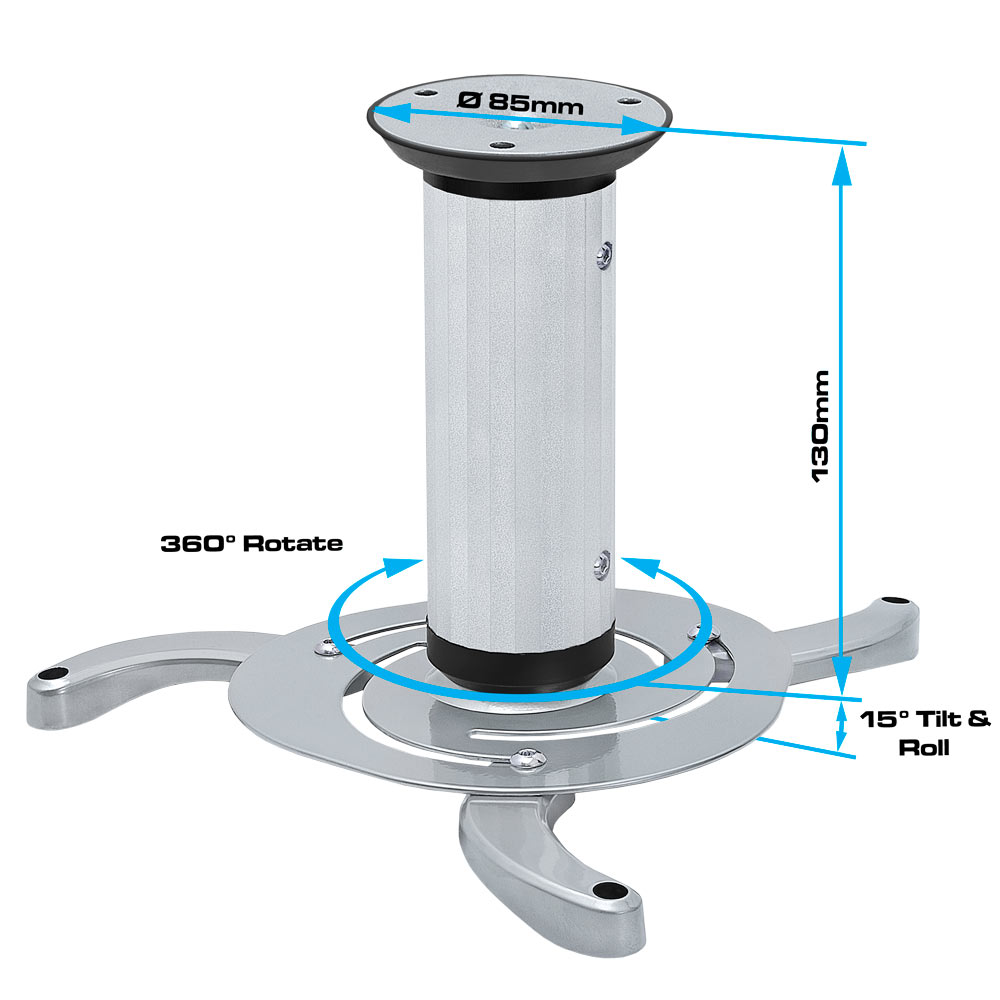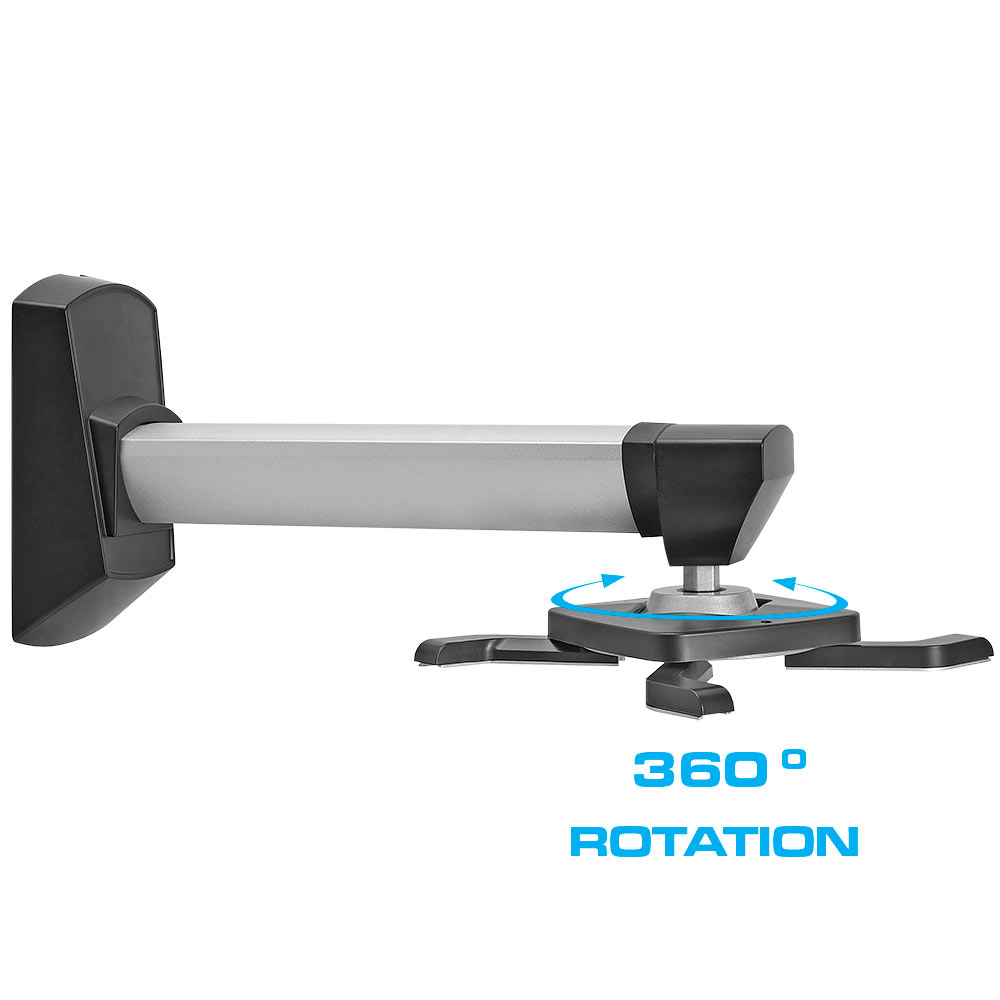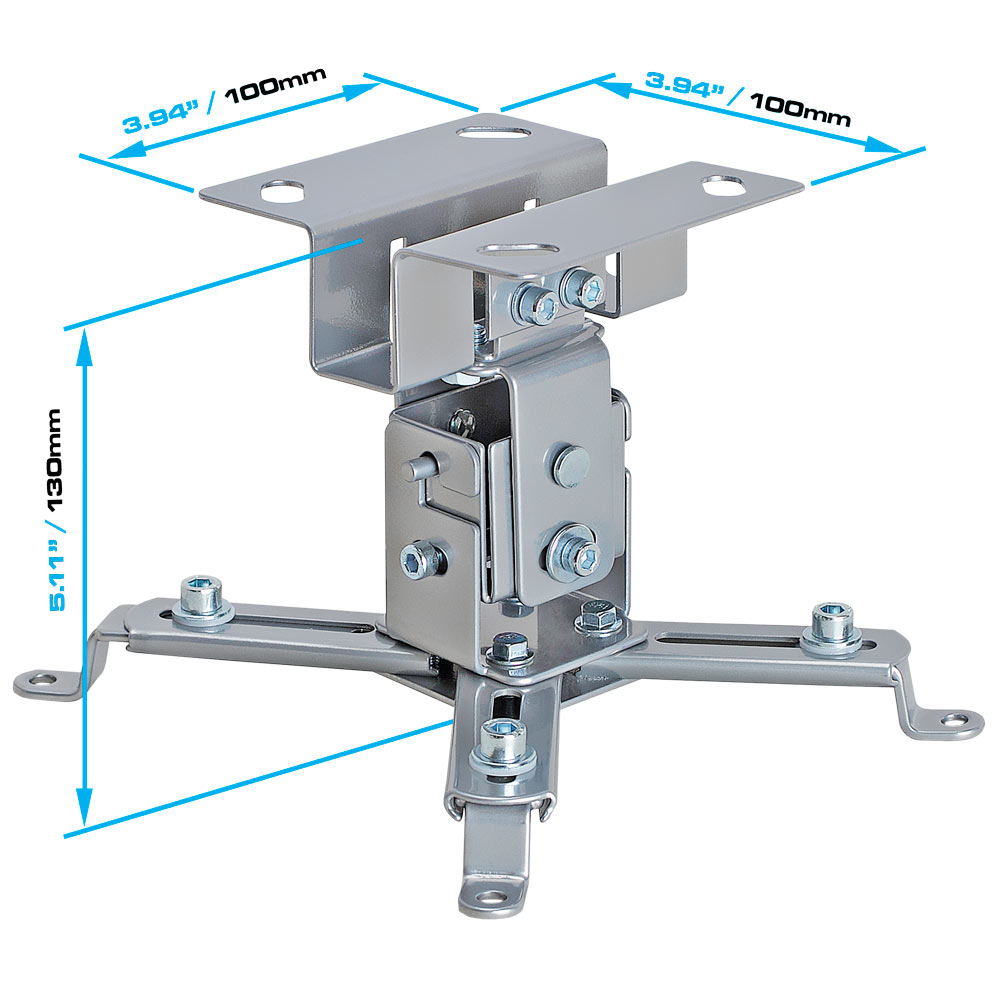Buying Projector Mounts In 2019: Are They Still Worth The Hassle?
A decade ago, setting up a high-end home theater with a huge screen, or a smaller commercial viewing room, was a no-brainer. You needed a projector and screen.Not every room was ideal for projection TV, of course. You needed a space that be completely darkened, and you also needed enough space at the front of the room for both the screen and speakers. The project could quickly become very pricey but projection was the only way to display high-quality video, on a screen size that HDTV’s of the day couldn’t approach.

However, people who still want an enormous screen but don’t have that kind of money to spend on their home theater, or those who want the complete “movie theater” experience at home, are still buying home projection systems.
That’s a much better decision than you might think.
Reasons to Buy a Home or Office Projection System
Screen Size
As we’ve mentioned, if you have a very large home theater and/or you want to watch video on a screen that’s 120 inches or even 150 inches in size, you really don’t have a choice. You’ll be hard pressed to find an HDTV with a screen that’s bigger than 105” and you’ll pay through the nose for it. That doesn’t mean a 150” high-end projection screen is cheap, either; expect the really good ones to cost anywhere from $2000-$4000, and that doesn’t include the price of the projector.On the other hand, if you’re willing to “settle” for a screen that approaches 90 or 100 inches in size, you’ll be able to get away for much less if you opt for projection. A top-of-the-line 100 inch screen runs a little over a thousand dollars, while you can buy good ones for a few hundred dollars; a very good 4K projector will cost under a thousand dollars. That means your 100-inch projection system will cost about $1000-$2000, which is 25% or even less than you’d pay for a 100-inch HDTV.
Just remember that to use most projection systems you’ll have to be able to get the theater almost completely dark – although projectors that aren’t as light-sensitive as they used to be, and screens that reject ambient light, are now available (at higher prices, of course).

The Cinematic Experience
Dedicated movie viewers who don’t plan on spending hours in their home theater watching reality shows or singing competitions are more likely to want the full cinematic experience of projection. HDTVs have better resolution than projection TVs, but that doesn’t tell the entire story. Even with 4K UHD video, you’re still cramming a big signal into a limited number of pixels. A movie shown on a really large screen allows the display of every small detail, which can only be seen in a cinematic display.Then there’s the “experience” part of the cinematic experience. There’s still nothing like turning the lights down all the way and letting yourself be immersed in a movie projected on a large screen. As good as HDTVs have gotten over the last few years, they’re still just TVs; even their better performance when it comes to brightness and contrast highlight the fact that you’re not in a movie theater.
Finally, the combination of lower cost and good display quality still makes projection television ideal for business conference and meeting rooms. That’s why projectors and screens are particularly popular in commercial applications.
Don’t Forget the Projector Mount
In our discussion so far, we’ve only mentioned two components of a video projection system, the projector and the screen. There’s a third component that’s crucial for any of these systems: the projector mount. Without a sturdy and versatile way to anchor the projector in front of the projector, you don’t have anything to watch.
There are three basic types of video projector mounts, and the right one for your application depends primarily on the size of your room and how it is set up.
- Ceiling – This is by far the most popular type of projector mount, because it’s possible to position the projector in a spot where it will project video right at the midpoint of the screen without having to worry about sight lines, obstructions or the “keystone effect” (the distortion of an image when it’s projected at an angle). That leaves only the projector’s height as a variable to be considered, and there are ceiling projector mounts that can telescope from the height of virtually any normal room’s ceiling. Just be sure that your projector’s video can be inverted when mounted upside down on the ceiling, or else you’ll need a mount that can be used as a platform.
- Wall – This is often a good second choice when lights or other obstacles on the ceiling, or the size of the room, make a ceiling mount impractical. Telescoping arms can help with positioning if you can’t install the wall projector mount where it will point at the screen’s midpoint, and the keystone correction capability of the projector you select will have to compensate for the rest.
- Stand – Usually the third best alternative, stand mounts are invaluable when the size or configuration of the room, or the materials used for ceiling and walls, don’t allow for normal ceiling or wall mounting. Stand mounts are available in various heights and sizes, but careful measurements are important to ensure that the projector’s height and angle to the screen will allow for acceptable video delivery.
You’ll also have to decide between a dedicated or universal projector mount. A dedicated mount is designed to accommodate a specific projector, with the mounting holes located exactly in the right spots, and is the best choice for an expensive projector you plan on owning for the long term. A universal mount can handle many different types and styles of projectors, thanks to a number of mounting holes and (usually) a telescoping arm. These mounts take longer to set up, but are much more versatile.
Other considerations when buying a mount should naturally include making sure it has the ability to hold the weight of your projector, and made from material which allows the projector to vent heat properly (steel is notorious for containing heat while aluminum is much better for venting). If you plan on projecting video into different areas or using the mount to hold different types of projectors, the ability to move the mount or telescoping arm can also be important.
You can spend a ton of money on dedicated projector mounts or brand-name universal mounts from companies like Premier, Peerless, Pyle, Optima, Epson, Sanus or BenQ.
But why would you? You can purchase the perfect mount from Cmple, with the same high quality as the expensive brand-name mounts – but at prices that are far lower. Cmple also provides large discounts for bulk orders and is ready to work with schools, businesses or other customers who want the best mounts available without having to overpay for an overpriced brand name mount.
0
Featured products





